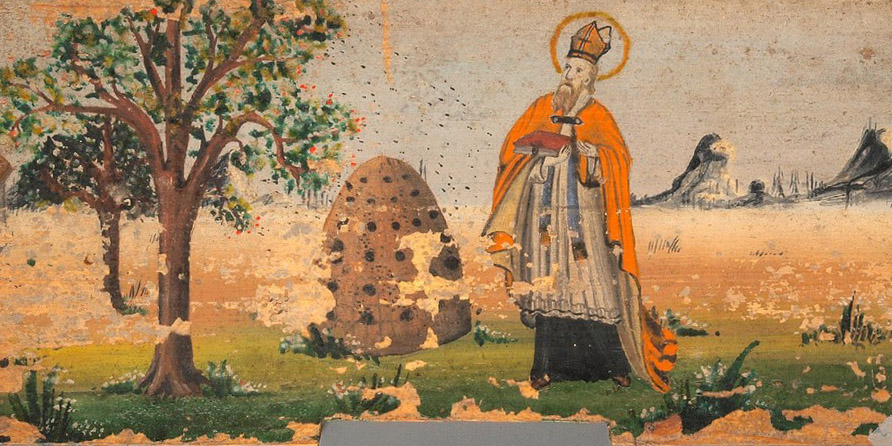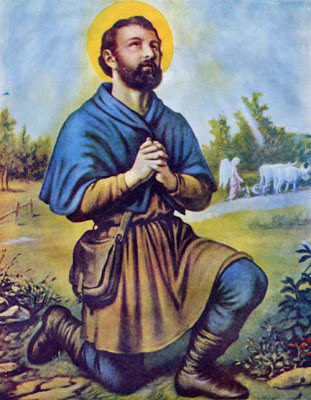
Often when we think about Saints, our minds are drawn to the more obvious candidates such as the great theologians, Doctors of the Church, and missionaries. When we think of great scientists and naturalists, people such as Newton, Galileo, Mari Curie, Darwin, John Muir and Aldo Leopold come to mind. But how often do we combine those ideas, that is, saint and scientist? It is a fairly well known fact amongst Catholics that in 1979, St. Pope John Paul II declared St. Francis of Assisi the patron Saint of those who promote ecology. However, very little is known about the more obscure Saints who were greatly involved in the study of nature and promoting its integral beauty.
In this secular age, which prizes science almost as a religion unto itself, little credit is given where it is due. Most do not know, or perhaps they ignore, the vast amount of information which the Catholic Church safeguarded and indeed, added to the scientific knowledge which we have today. During the Middle Ages, the preservation of philosophical and scientific texts were largely due to the copying of manuscripts which took place within the monasteries. Furthermore, the Medieval monasteries often contained extensive herb gardens. The monks would record their findings about the medicinal properties of plants in a text called a Materia Medica. Not only did the Church contribute greatly to scientific advancement during the Middle Ages, but also into our modern time.
We, as the Church militant, have an obligation to pray for the Church suffering, but so too should we acknowledge the great sacrifices and accomplishments of the Church triumphant. By elevating these holy souls to the status of saint, mother Church has given us a plethora of figures to emulate and call upon in our daily lives.

Saint Ambrose
While Saint Ambrose is one of the four original doctors of the Catholic Church, he is also the patron saint of beekeepers and candlemakers. Legend has it that when he was a baby a swarm of bees landed on his face and left behind a single drop of honey. His father took this as a good omen, declaring that his son would grow up with the gift of a “honeyed tongue”. The prediction did indeed come to pass and St. Ambrose became an excellent writer and a persuasive orator.
Saint Ambrose, pray for us.
Feast day: December 7th.

Saint Valentine
St. Valentine is, of course, the patron saint of love and happy marriages, but he is also one of Catholic Church’s other patrons of bee keepers. As a physician, St. Valentine would often use both beeswax and honey in his practice. Historically, bees have been associated with love, and so in St. Valentine we find the perfect marriage of bees and love. Calling upon the intercession of this great saint was thought to ensure a sweet harvest of honey and protection to those who care for bees.
St. Valentine, pray for us.
Feast day: February 14th

Saint Isidore
Isidore was born in 1070 A.D. to a peasant family near Madrid, Spain. He often came later to work in the fields than other laborers because he would first attend Mass in the morning. Yet his work never suffered and he always met the chores required of him. It was said two angels, one on either side of Isidore, appeared and joined their pious companion in plowing the fields. St. Isidore is the patron saint of farmers.
St. Isidore, pray for us.
Feast Day: May 15th
Saint Fiacre
St. Fiacre has been recognized as patron saint of gardeners (as well as cab drivers and florists, among other things) since medieval times. Born in Ireland in the 7th century, Fiacre was raised in a monastery. During the Dark Ages, monasteries were repositories of learning, and it is here that Fiacre became a skillful user of healing herbs. As he earned fame for his knowledge of plants and healing abilities, disciples flocked to him. Fiacre sought more solitude and left Ireland for France where he established a hermitage in a wooded area near the Marne River. Here Fiacre built an oratory in honor of the Virgin Mary and a hospice where he received strangers. He himself retreated to a solitary cell, living a life of prayer and manual labor in his garden.
The legend upon which Fiacre’s sainthood rests is this: Fiacre asked the local bishop, Bishop Faro, for more ground on which to plant food and herbs. Faro told him he could have as much land as he could entrench in one day. After prayer, Fiacre used the point of his staff to turn the earth, topple trees and dig up briers and weeds to prepare the land for a garden.
St. Fiacre, pray for us.
Feast Day: August 11th
Saint Gall
Gall was born in Ireland and, after growing up, he became a monk. He traveled to preach the Gospel and help start new monasteries until he became ill and needed to stay in one place to heal and recover. Gall often spent time outside in nature reflecting and praying. Birds frequently kept him company during those times.
Gall miraculously performed an exorcism for a woman who was possessed by demons who hadn’t come out of her previously when two different bishops had tried to exorcise them. But when Gall tried to exorcise them, the demons flew out of Fridiburga’s mouth in the form of a black bird. That dramatic event inspired people to make Gall the patron saint of birds.
Gall encountered a bear in the forest near his monastery one day and stopped the bear from attacking him after it charged toward him. Then, the story goes, the bear went away for a while and returned later with some firewood it had apparently gathered, setting the wood down by Gall and his fellow monks. From that point on, the bear reportedly became a companion to Gall, showing up around the monastery regularly.
St. Gall, pray for us.
Feast Day: October 16th
Saint Hildegard of Bingen
Hildegard was born in 1098 to a noble family in the county of Sponheim, west of present-day Frankfurt. As a child she experienced visions of God, which she described as “living light.” She was given over to the care of a nun at the age of eight, who taught her to read and write, and by 14, she was a nun herself. When her mentor passed away in 1136, Hildegard was unanimously chosen to lead her Benedictine monastery.
In addition to running the monastery, Hildegard also devoted her time to writing musical compositions, poems and plays, as well as theological texts, medical books and scientific essays. She founded two monasteries, and extensively travelled around Germany on numerous speaking tours. All in all, Hildegard was a writer, composer, philosopher, mystic, visionary, and polymath of the High Middle Ages. She is one of the best-known composers of sacred monophony, as well as the most recorded in modern history. She has been considered by many in Europe to be the founder of scientific natural history in Germany. She is the patron saint of musicians and writers.
St. Hildegard, pray for us.
Feast Day: September 17th